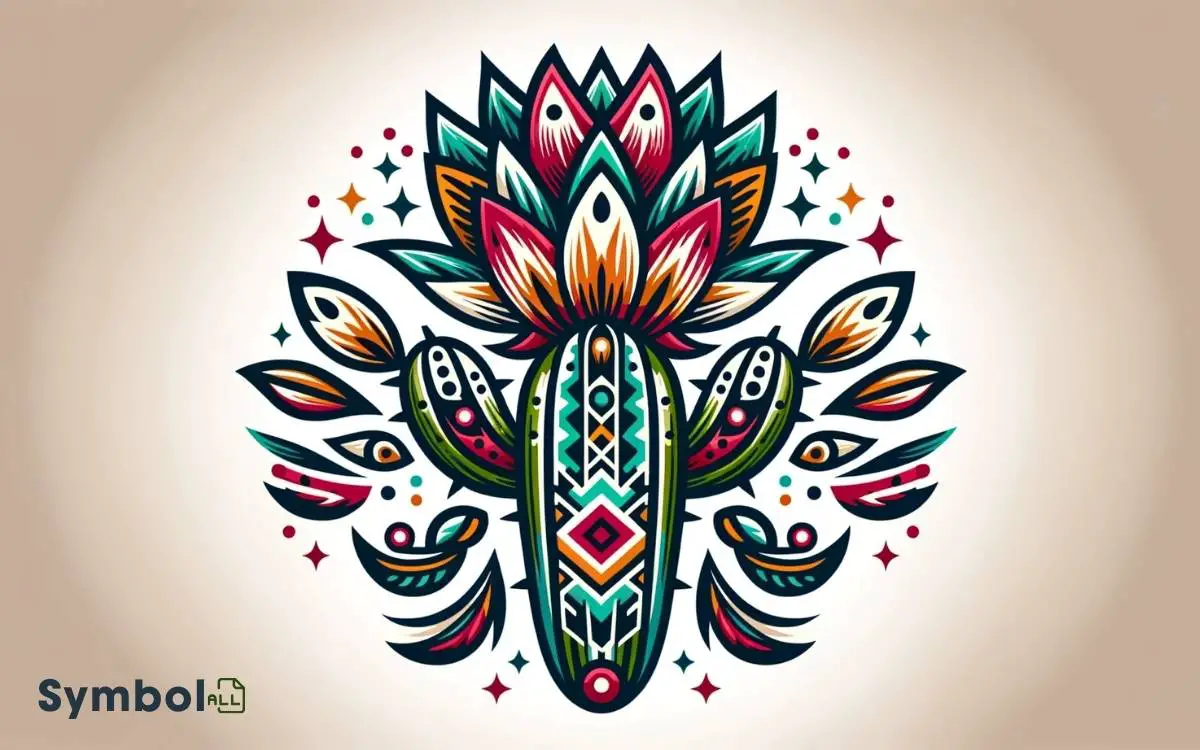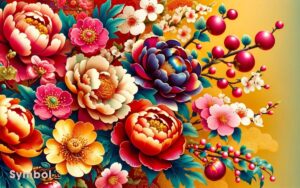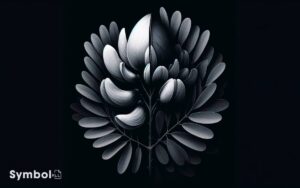Native American Cactus Flower Symbol: Resilience!
You’ll find the Native American cactus flower rich in symbolism. It represents resilience, showcasing beauty that emerges from harsh conditions. This emblem embodies the sacred fleeting moments of life, highlighting strength and perseverance.
Its meaning extends beyond physical endurance to spiritual resilience, mirroring the tenacity of Native American tribes across arid landscapes.
With each species conveying unique narratives, the cactus flower signifies the deeply intertwined narratives of survival, spirituality, and daily life.
Artists and conservationists alike work to preserve its legacy, blending art, culture, and nature. As you explore further, you’ll uncover even more layers to its enduring significance.

Key Takeaways
Symbolic Interpretations
The cactus flower represents resilience, beauty emerging from harsh conditions, and the sacredness of life’s fleeting moments in Native American cultures.
You’ll find this symbol woven into the fabric of their stories, art, and rituals, serving as a proof of the strength and perseverance inherent in nature and, by extension, within themselves.
It’s not just a plant; it’s a demonstration of survival and the ability to thrive under adversity. For these communities, the cactus flower embodies the essence of life’s paradoxes—harsh yet beautiful, temporary yet impactful.
Historical Significance
Delving into its historical significance, you’ll discover that the cactus flower has been an essential emblem for numerous Native American tribes, symbolizing not only physical endurance but also spiritual resilience.
This resilient plant thrives in arid conditions, mirroring the tribes’ ability to adapt and prosper in challenging environments. Historically, the cactus flower represented life and sustenance, as various parts of the cactus served as food and water sources.
Beyond its practical uses, the bloom held profound spiritual meanings. Tribes believed it possessed protective qualities and incorporated it into rituals and ceremonies to invoke divine favor and strength.
Its enduring nature made it a symbol of unconditional love and loyalty, weaving it deeply into the cultural fabric and heritage of Native American societies.
Varieties and Meanings
As you explore the varieties and meanings of Native American cactus flowers, you’ll uncover the rich tapestry of significance each species holds.
The symbolism ingrained in their blooms reveals layers of cultural interpretations, reflecting the deep connection between these plants and indigenous peoples.
This section will guide you through understanding how different cactus species and their flowers symbolize aspects of life, spirituality, and resilience in Native American cultures.
Cactus Species Significance
Exploring the significance of various cactus species reveals a rich tapestry of meanings and cultural importance woven into Native American traditions. Each species carries its own narrative, deeply embedded in the survival, spirituality, and daily life of indigenous communities.
For example, the towering Saguaro cactus stands not just as a mere plant but symbolizes water sustenance and resilience in the harsh desert environment. The prickly pear, with its ability to thrive under adverse conditions, has been seen as a symbol of endurance and adaptability.
Understanding these species within their cultural context offers you a profound appreciation of their roles beyond the ecological; they’re emblematic of the harmony between nature and Native American cultures, embodying lessons of resilience, adaptability, and the sacredness of the natural world.
Symbolism in Blooms
Revealing the symbolism of cactus blooms exposes a nuanced palette of meanings deeply respected in Native American cultures, each variety carrying its unique spiritual significance.
These blooms aren’t just visually striking; they’re imbued with layers of meaning, reflecting aspects of life, resilience, and spirituality.
| Bloom Color | Symbolism |
|---|---|
| White | Purity and cleansing |
| Yellow | Protection and warmth |
| Red | Strength and passion |
| Pink | Love and unity |
You’ll find that these colors not only enhance the beauty of their arid environments but also serve as reminders of the intricate balance between nature and spiritual beliefs.
Each color’s symbolism is a reflection of the depth of understanding and connection Native American cultures have with the natural world.
Cultural Interpretations
Native American cultures’ interpretation of cactus flowers varies widely, each variety holding a distinct meaning that reflects their deep connection to the environment.
For example, the bright yellow blooms of the Saguaro cactus often symbolize the warmth of the desert sun, embodying solar energy and protection.
Meanwhile, the delicate pink flowers of the Prickly Pear cactus can represent resilience and the ability to thrive in challenging conditions.
You’ll find that the rare appearance of white cactus flowers might be seen as symbols of purification and healing, emphasizing the plant’s role in traditional medicine.
This diversity in symbolism underscores the nuanced relationship between Native American communities and their surroundings, where every element of nature is imbued with spiritual significance and revered for its unique contribution to life.
Cultural Connections
You’ll find that the cactus flower holds profound spiritual significance within Native American cultures, often symbolizing purity, endurance, and transformation.
This reverence is intricately woven into artistic representations, from pottery to textiles, showcasing the deep connection between the community and this resilient flora.
Through these mediums, the symbolic nature of the cactus flower is celebrated, reflecting its pivotal role in cultural identity and heritage.
Spiritual Significance
The spiritual significance of the cactus flower in Native American cultures embodies a deep connection to the land and its teachings, offering insights into the enduring relationship between people and nature.
This connection isn’t merely about survival; it’s a profound dialogue, a mutual respect between all living things and the earth. The cactus flower, with its resilience and beauty, symbolizes this balance and harmony.
| Aspect | Significance |
|---|---|
| Resilience | Represents endurance and survival. |
| Beauty in Harshness | Symbolizes finding joy and beauty in challenging conditions. |
| Spiritual Awakening | Encourages inner growth and the journey toward enlightenment. |
These meanings aren’t static; they evolve, reflecting the dynamic nature of spiritual understanding within these communities.
Artistic Representations
Exploring how the cactus flower is depicted in art reveals deeper cultural connections and insights into Native American traditions and values. Artists often use the cactus flower to symbolize resilience, beauty, and the ability to thrive in challenging environments.
This representation isn’t just a casual choice; it’s a profound reflection of the values that many Native American communities hold dear.
Through paintings, pottery, and textiles, you’ll find the cactus flower intricately woven or painted, each detail telling a story of survival, endurance, and the importance of connection to the land.
These artistic expressions serve not only as a reflection of the artists’ skill and creativity but also as a bridge, inviting you to explore further into understanding the rich tapestry of Native American cultures and the symbolic meanings they cherish.
Spiritual Representations
Cactus flowers, revered by Native American cultures, symbolize sacred beliefs and spiritual connections with the natural world.
These blossoms hold profound meaning, embodying resilience, purity, and the ability to thrive under challenging conditions. They’re not merely plants; they’re spiritual emblems that guide and inspire.
Consider these spiritual representations:
- Resilience: Surviving in harsh climates, they symbolize strength and endurance.
- Purity: Their blossoms emerge from the rugged, symbolizing purity and beauty amidst adversity.
- Life and death: They represent the cycle of life, from growth to decay.
- Healing: Used in rituals for their medicinal properties, signifying healing and protection.
- Transformation: The blooming process symbolizes spiritual awakening and transformation.
Understanding these symbols deepens your appreciation for their significance in Native American spirituality, far beyond their physical appearance.
Art and Iconography
In Native American art and iconography, cactus flowers frequently emerge as prominent symbols, embodying a rich tapestry of spiritual and cultural meanings.
You’ll find that these flowers aren’t just casual elements; they’re deeply embedded within the narrative fabric of various tribes, serving as metaphors for life, resilience, and beauty emerging from harsh conditions.
Through detailed carvings, intricate beadwork, and evocative paintings, artists convey messages of survival, transformation, and the sacredness of the natural world.
Each representation is a evidence to the cactus flower’s significance, blending seamlessly with stories and traditions passed down through generations.
This careful portrayal underscores a profound respect for the environment and the interconnectedness of all life, showcasing the cactus flower as a pivotal symbol in Native American cultural expression.
Modern Representations
Building on the deep-rooted significance of cactus flowers in Native American culture, modern representations continue to highlight their symbolic power in contemporary art and media.
These portrayals often embody themes of resilience, beauty in harsh environments, and spiritual connection. Artists and creators draw on this rich symbolism to convey deep messages about survival, adaptation, and respect for the natural world.
In contemporary contexts, you’ll see the cactus flower symbol used in:
- Visual arts, including paintings and digital creations
- Fashion design, integrating motifs into textiles
- Environmental campaigns, symbolizing the fragility and strength of ecosystems
- Film and literature, where they represent characters’ growth or journeys
- Jewelry design, capturing the flower’s elegance and endurance
Such modern representations enrich our cultural landscape, reminding us of the enduring significance of these symbols.
Conservation Efforts
Recognizing the unique value and vulnerability of cactus flowers, conservationists have launched initiatives to protect these symbols of resilience and beauty.
These efforts are multifaceted, focusing on habitat preservation, combating invasive species, and fostering public awareness.
You’ll find that conservation teams work tirelessly to guarantee these native plants, integral to Native American cultures, thrive for future generations.
They employ strategic replanting in areas where cacti have been uprooted or diminished due to urban expansion or illegal harvesting. Additionally, educational programs are pivotal, aiming to instill a sense of stewardship within local communities and beyond.
These programs highlight the cactus flower’s significance, not only ecologically but as a cultural emblem, urging everyone to participate in their preservation.
Conclusion
Essentially, you’ve journeyed through the rich tapestry of the Native American cactus flower, exploring its deep-rooted symbolic interpretations, historical significance, and the myriad ways it connects cultures and embodies spirituality.
From its portrayal in art to its role in modern symbolism and conservation, this emblem serves as a poignant reminder of nature’s resilience and beauty.
As the saying goes, ‘Every rose has its thorn,’ but in the case of the cactus flower, it’s a symbol that truly blooms against the odds, weaving an intricate story of survival, reverence, and continuity.






